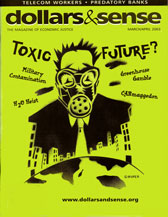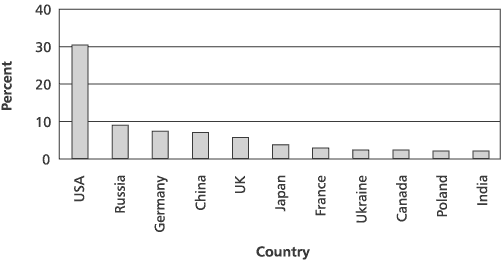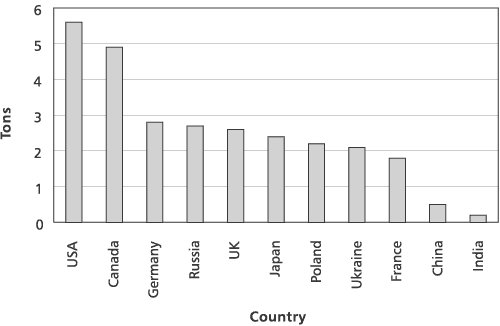Who's to Blame for Climate Change?
This article is from the March/April 2003 issue of Dollars and Sense: The Magazine of Economic Justice available at http://www.dollarsandsense.org

This article is from the March/April 2003 issue of Dollars & Sense magazine.
Subscribe Now
at a discount.
It's now an indisputable fact that the global climate is changing. Scientists have warned for decades that "greenhouse gases," mainly carbon dioxide (CO2), were building up in the atmosphere and trapping the sun's heat. Over the course of the 20th century, as fossil-fuel pollution expanded, the amount of CO2 in the atmosphere rose by about 30%, increasing temperatures and causing extreme weather patterns worldwide. The greenhouse danger is now so undeniable that even George W. Bush's "blue ribbon" scientific panel on climate change admitted that global temperatures are on the rise.
If we hope to combat global warming, we need to drastically reduce the levels of CO2 released into the atmosphere. Scientists consider even the targets set by the Kyoto Protocol (the international agreement to limit greenhouse gas emissions) inadequate compared to the urgency of the problem. But the Bush administration reneged on the United States' commitment even to these minimal standards, on the pretext that the agreement "exempts 80 percent of the world including major population centers, such as China and India."
Bush's scapegoats, however, are hardly responsible for the climate-change crisis. China accounted for just 7% of the world's CO2 emissions over the course of the 20th century; India, for only 2%. The United States, in contrast, accounted for more than 30% of the total. (See Graph 1.) Moreover, emissions levels in the United States continue to surge, rising every year between 1991 and 2000, the latest year for which data is available. According to the Department of Energy, the country's fossil-fuel-related CO2 emissions increased by more than 2.7 percent between 1999 and 2000. In contrast, China reduced its emissions by almost 2.2% in 2000, its third straight year of reductions.
Percentage of World Carbon Emissions, 1900-1999

The United States' ruling elite has never been as big about taking responsibility for its actions (e.g., slavery, support for dictatorships, etc.), as it has been about posturing as a world leader. So it comes as no surprise that the United States remains number one in CO2 emissions (in both total and per capita terms) year after year. (See Graph 2.) If any country is in a position--technologically and economically--to "lead by example" towards a sustainable future, it is the United States. Yet the U.S. government has steadfastly refused to adopt common-sense measures like raising fuel efficiency standards, reducing automobile use, lessening dependence on coal and petroleum, or promoting alternative-energy technologies.
Per Capita Emissions, 1999

Source: World Resources Institue, "The U.S., Developing Countries, and Climate Protection: Leadership or Stalemate?" June 2001, www.wri.org/wri/
